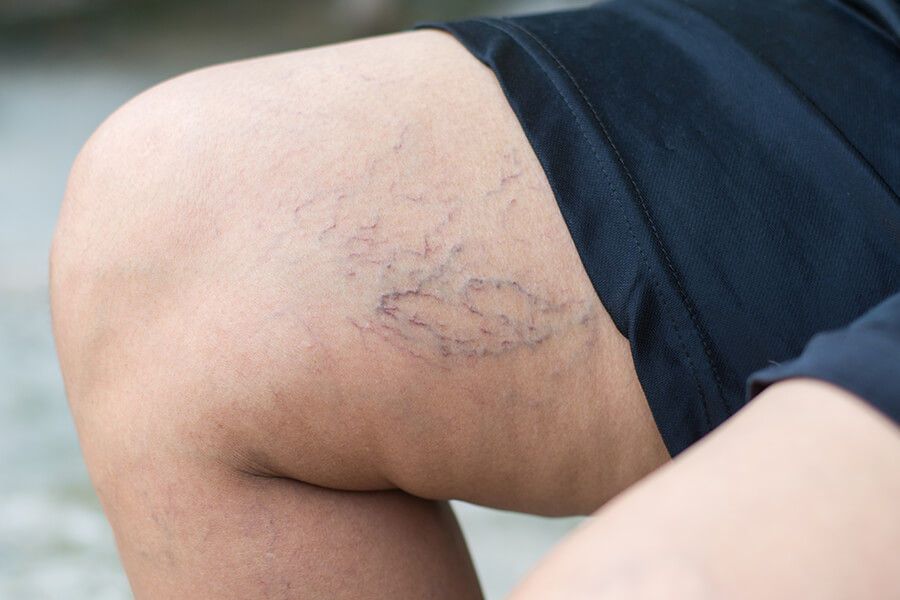Thousands of people every year consider getting treatment for varicose veins and spider veins. If you are considering treatment, this brochure will provide information that you may find helpful. Remember, this cannot substitute for a consultation with Dr Goldbaum.
What are Varicose Veins?
Varicose veins are visible and bulging veins often associated with symptoms such as tired, heavy, or aching legs. In severe cases, Varicose Veins can rupture, or cause ulcers. Varicose veins are most common in the legs and thighs but can sometimes be found in the groin.
What are Spider Veins?
“Spider Veins” are thread like veins that appear on the skin’s surface. These may look like “starburst” clusters or a web-like maze. Spider veins are most common in the thighs, ankles and feet. They may also appear on the face and nose.
What causes Varicose and Spider Veins?
The causes of varicose and spider veins are not entirely understood. In some instances, the absence or weakness of valves in the veins allow the backward flow of blood away from the heart. This causes a build up of pressure in the veins resulting in outbursts of spider veins or bulging varicose veins. Less commonly, varicose veins are caused by diseases such as phlebitis or congenital abnormalities of the veins. Venous disease is generally progressive and cannot always be entirely prevented. However, in some cases wearing support hosiery and maintaining normal weight and regular exercise may be beneficial.
Hormones, family history and long periods of standing are also thought to cause varicose veins.
What treatments are available to treat Varicose and Spider Veins?
Larger varicose veins can occur on their own or can underline spider veins. In most cases the varicose veins should be treated before spider veins.
Sclerotherapy uses a fine needle to inject a solution directly into the vein. The solution irritates the lining of the vein, causing collapse of the inner lining and ultimately the vein. The vein turns into scar tissue that fades from view.
Following the injection of the solution into the vein, it is important to apply compression such as bandages or stockings to the treated leg. This causes the collapsed vein wall to stick together and seal shut.
Does the procedure hurt?
The microinjections are hardly felt and are virtually painless. The injected solution can cause a mild sting for several seconds, and the treated veins, if large, may feel a little sore for several days.
What are the side effects of Sclerotherapy?
Injection sclerotherapy is a very safe procedure with very little risk. The treating doctor will discuss this with you in detail
How long to the results last?
In the large majority of patients, once the veins have sealed (sclerosed) the result is permanent.
Depending on the underlying causes of the veins, new veins may form over time, that will require further treatment.
Some patients may require ongoing maintenance of 1 – 2 treatments each year for recurring spider veins (just as regular haircuts are required for growing hair).
